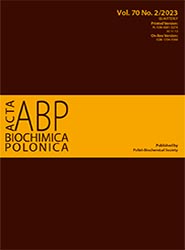Endoplasmic reticulum stress involves the high glucose-induced nucleus pulposus cell pyroptosis
Abstract
Objective: Diabetes has been identified as a risk factor for intervertebral disc degeneration (IDD). The aim of this study is to investigate the potential mechanism underlying diabetes-related pyroptosis in nucleus pulposus (NP) cells. Methods: We used a high-glucose environment to mimic diabetes in vitro and examined the endoplasmic reticulum stress (ERS) and pyroptotic response. Furthermore, we utilized activators and inducers of ERS to explore the role of ERS in high-glucose-induced pyroptosis in NP cells. We evaluated the ERS and pyroptosis levels using immunofluorescence (IF) or RT-PCR and measured the expression of collagen II, aggrecan, and MMPs. Additionally, we used ELISA to determine the levels of IL-1β and IL-18 in the culture medium, and CCK8 assay to test cell viability. Results: High-glucose conditions promoted the degeneration of NP cells and triggered ERS and pyroptosis. A high level of ERS aggravated pyroptosis, and partially suppressing ERS resisted high-glucose-induced pyroptosis and alleviated the degeneration of NP cells. Inhibiting caspase-1-based pyroptosis under high-glucose conditions helped relieve the degeneration of NP cells but did not affect ERS levels. Conclusions: High-glucose induces pyroptosis in NP cells via the mediation of ERS, and suppressing ERS or pyroptosis protects NP cells under high-glucose conditions.
Acta Biochimica Polonica is an OpenAccess quarterly and publishes four issues a year. All contents are distributed under the Creative Commons Attribution-ShareAlike 4.0 International (CC BY 4.0) license. Everybody may use the content following terms: Attribution — You must give appropriate credit, provide a link to the license, and indicate if changes were made. You may do so in any reasonable manner, but not in any way that suggests the licensor endorses you or your use.
Copyright for all published papers © stays with the authors.
Copyright for the journal: © Polish Biochemical Society.


